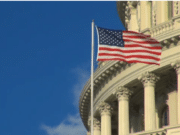Higher food costs, increasing rents, and soaring energy prices are projected to have pushed consumer price inflation to its highest level since December 1981 in March.
According to Dow Jones, the CPI (Consumer Price Index) will soon be revealed, with experts expecting a monthly increase of 1.1% and an increase of 8.4% year-over-year. This compared to a 0.8% growth in February, or 7.9% year-over-year, the largest since early 1982.
What more should we keep in mind as investors?
Mark Zandi, the chief economist at Moody’s Analytics, recently stated, “It’s going to be ugly. It’s a perfect storm – Russian invasion, surging oil prices, China locking down, further disruptions to supply chains, wage growth accelerating, unfilled positions. Just a kind of scrambled mess leading to painfully high inflation. We’re struggling through two massive global supply shocks. It would be hard to imagine we didn’t suffer higher inflation.”
According to Dow Jones, core inflation, which excludes food and energy, is predicted to grow half a percent – the same as February – with a year-over-year gain of 6.6%, up from 6.4%. “The good news is it does look like it will be the peak because of oil prices, “The good news is it does look like it will be the peak because of oil prices,” according to Diane Swonk, Grant Thornton’s senior economist. Oil prices soared when Russia invaded Ukraine in late February, reaching a peak of $130.50 per barrel for WTI (West Texas Intermediate) oil futures in early March. On Monday, a barrel of oil fell to around $94/
According to AAA, gasoline prices increased too, hitting a national average of $4.33 per gallon of unleaded on March 11th. On Monday, the price was $4.11 a gallon. Diane Swonk added, “The problem for the Fed is the broadening of inflation from goods into services and because used car prices might be picking up again. The supply chain issues aren’t going away. They’re getting worse.”
Experts believe that inflation will peak this month or next month, judging by base effects. According to Mark Zandi, the headline CPI will drop to 4.9% by the end of the year. The Federal Reserve is likely to tighten policy aggressively to cool the country’s fastest-growing inflation rate in four decades. Markets anticipate a half-point rise in May, and analysts believe a strong inflation report in June will result in another half-point hike. Zandi added, “The Fed’s on track. It’s at least a half-percent hike, and the balance sheet reductions are starting.”
The Fed hiked interest rates by a quarter-point after reducing the fed funds target rate to zero in early 2020. The Fed is expected to hike rates by 50 basis points at its May 3rd meeting, according to Tom Simons, money market analyst at Jefferies, and the CPI should not change that. “If it comes in dramatically higher than expected, which I don’t think it will, it’s going to start talk of a 75-basis-point hike, or an inter-meeting hike,” Simons said. Note: a basis point is 0.01%, so fifty basis points are the equivalent of 0.50%. One hundred basis points would be a complete 1%. You get the idea.
According to Simons, energy costs in the CPI are likely to rise 18% in March. He added, “That first half of March was particularly an acute post-Russian invasion. Food prices are a similar story but not nearly to the same extent… Housing again is going to be a pretty significant factor.” He anticipates a 0.5% increase in owners’ equivalent rent, or the cost of a home in CPI, while rents would rise 0.6% month-over-month. One area where expenses are projected to grow is housing. Shelter, which accounts for a third of the CPI, would be up 4.6% year-over-year. The housing market is, unfortunately, only part of the equation. Let’s keep our collective fingers crossed.













